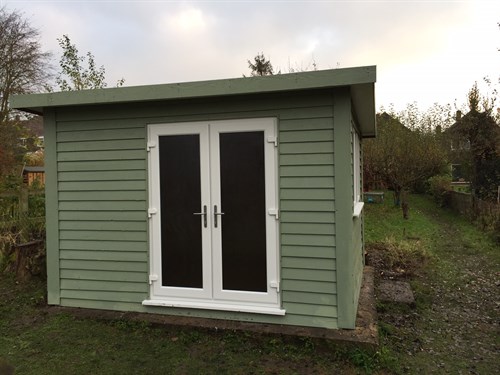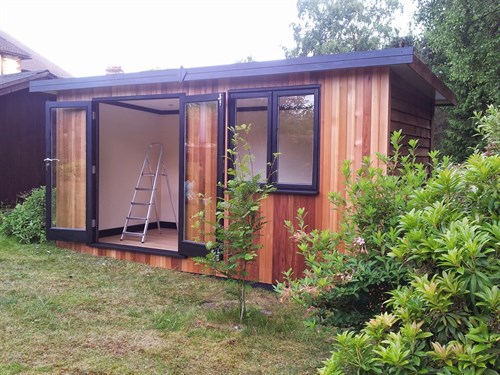
These days I visit more customers at their homes than ever before, it’s incredibly useful as I can get a real feel for the space we’ll be working in and the logistics of installation of their garden room or garden office.
One thing I can take a look at is what exactly the building will be sitting on and with regard to this there are always two options...
Option 1.
Recently completed in Essex, this garden building sits on the base of an old wooden shed:

Even though we have a membrane under the entire building we always use pads (thin pieces of timber, bed on fast setting concrete) just to lift the building an inch off the flat surface it sits on.
This small but crucial addition ensures that there will never be any rising damp, nothing will rot and the wood is constantly keeping dry through the ventilation system.
Not to mention that you don’t have to spend hundreds of pounds breaking up or destroying a huge concrete slab that actually could be very useful!
Option 2.
If, as in many cases, there isn’t an existing slab, patio, or base of an old garage and it is just virgin grass, we create the foundations by hand:

Years ago we used to use a post hole borer which used to make beautiful cylindrical holes with smooth sides, sounds good.....NO!
The symmetry and smoothness of those holes meant that the grab and friction was minimised and now by digging a rather cavernous hole by hand it increases the friction dramatically.
With this method we no longer have to dig so deep as to reach solid soil under compression. The rougher sides and the friction on them means they are so much more effective as the load bearing surface and this process takes only a few hours and provides a stronger, better ventilated foundation system with far more grip!
People often think that they must have their building the exact size of their existing slab but that is not a problem. It can be several feet bigger and we will pile what is not covered by the slab - a combination of option 1 and 2!!

So whatever the base for you building may be, we can work with it and ensure your building is strong and will stand the test of time!
Author: David Fowler